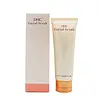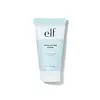What's inside
What's inside
 Key Ingredients
Key Ingredients

 Benefits
Benefits

 Concerns
Concerns

 Ingredients Side-by-side
Ingredients Side-by-side

Water
Skin ConditioningStearic Acid
CleansingButylene Glycol
HumectantPrunus Armeniaca Seed Powder
AbrasivePentylene Glycol
Skin ConditioningPotassium Cocoate
EmulsifyingPotassium Hydroxide
BufferingGlyceryl Stearate
EmollientPEG-100 Stearate
Urea
BufferingAllantoin
Skin ConditioningSapindus Mukorossi Peel Extract
Skin ConditioningChlorhexidine Digluconate
AntimicrobialDipotassium Glycyrrhizate
HumectantPhenoxyethanol
PreservativeWater
Skin ConditioningEthylhexyl Palmitate
EmollientGlycerin
HumectantAluminum Starch Octenylsuccinate
AbsorbentMagnesium Aluminometasilicate
AbsorbentButylene Glycol
HumectantGlyceryl Stearate
EmollientPEG-100 Stearate
Polysorbate 60
EmulsifyingCetearyl Alcohol
EmollientStearic Acid
CleansingJuglans Regia Shell Powder
AbrasiveSorbitan Stearate
EmulsifyingCocamidopropyl Betaine
CleansingTocopheryl Acetate
AntioxidantXanthan Gum
EmulsifyingDisodium EDTA
Sodium Chloride
MaskingTriethanolamine
BufferingPrunus Armeniaca Fruit Extract
Skin ConditioningPhenoxyethanol
PreservativeCaprylyl Glycol
EmollientParfum
MaskingWater, Ethylhexyl Palmitate, Glycerin, Aluminum Starch Octenylsuccinate, Magnesium Aluminometasilicate, Butylene Glycol, Glyceryl Stearate, PEG-100 Stearate, Polysorbate 60, Cetearyl Alcohol, Stearic Acid, Juglans Regia Shell Powder, Sorbitan Stearate, Cocamidopropyl Betaine, Tocopheryl Acetate, Xanthan Gum, Disodium EDTA, Sodium Chloride, Triethanolamine, Prunus Armeniaca Fruit Extract, Phenoxyethanol, Caprylyl Glycol, Parfum
Ingredients Explained
These ingredients are found in both products.
Ingredients higher up in an ingredient list are typically present in a larger amount.
Butylene Glycol (or BG) is used within cosmetic products for a few different reasons:
Overall, Butylene Glycol is a safe and well-rounded ingredient that works well with other ingredients.
Though this ingredient works well with most skin types, some people with sensitive skin may experience a reaction such as allergic rashes, closed comedones, or itchiness.
Learn more about Butylene GlycolGlyceryl Stearate is a mix of glycerin and stearic acid.
It is used to stabilize the mixing of water and oil ingredients. By preventing these ingredients from separating, it can help elongate shelf life. It can also help thicken the product's texture.
As an emollient, it helps soften skin and supports barrier-replenishing ingredients.
In cosmetics, Glyceryl Stearate is often made from vegetable oils or synthetically produced.
This ingredient may not be fungal-acne safe
Fun fact: The human body also creates Glyceryl Stearate naturally.
Learn more about Glyceryl StearatePeg-100 Stearate is an emollient and emulsifier. As an emollient, it helps keep skin soft by trapping moisture in. On the other hand, emulsifiers help prevent oil and water from separating in a product.
PEGS are a hydrophilic polyether compound . There are 100 ethylene oxide monomers in Peg-100 Stearate. Peg-100 Stearate is polyethylene glycol ester of stearic acid.
Phenoxyethanol is a preservative that has germicide, antimicrobial, and aromatic properties. Studies show that phenoxyethanol can prevent microbial growth. By itself, it has a scent that is similar to that of a rose.
It's often used in formulations along with Caprylyl Glycol to preserve the shelf life of products.
Stearic Acid is a fatty acid. It is an emollient, emulsifier, and texture enhancer.
As an emollient, stearic acid helps soften skin. It aids the skin's protective barrier by preventing water loss. It also provides a gentle cleansing effect without stripping away natural oils.
Stearic acid may also be used to enhance the texture of products. It can add volume and stabilize ingredients such as water and oil. This can help water and oil ingredients from separating.
Sources of stearic acid include animal or vegetable fats/oils such as coconut or shea. It can be naturally found in butter, cocoa butter, shea butter, vegetable fats, and animal tallow.
This ingredient may not be Malassezia folliculitis, or fungal-acne safe.
Learn more about Stearic AcidWater. It's the most common cosmetic ingredient of all. You'll usually see it at the top of ingredient lists, meaning that it makes up the largest part of the product.
So why is it so popular? Water most often acts as a solvent - this means that it helps dissolve other ingredients into the formulation.
You'll also recognize water as that liquid we all need to stay alive. If you see this, drink a glass of water. Stay hydrated!
Learn more about Water